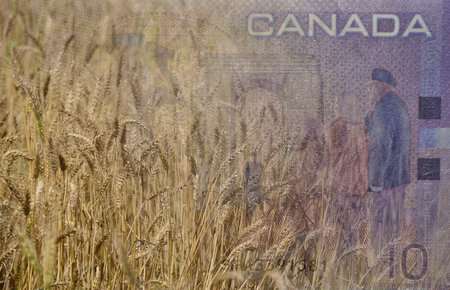The federal government released its 2017 Budget, highlighting innovation in agriculture
By Jennifer Jackson
There’s some good news for the agri-food industry in the 2017 federal budget, released Mar. 22. The government committed to grow Canada’s agri-food exports to at least $75 billion annually by 2025, and said it will “support the growth of and innovation in” the sector.
The government also listed the following efforts it has made to support Canada’s farmers and food processors:
- “Launching a full review of rail service across western Canada.
- “Creating a $10.1 billion Trade and Transportation Fund that will invest in gateways and ports, to help get agri-food products to market.
- “Successfully completing the Comprehensive Economic and Trade Agreement with the European Union, and making ongoing efforts to expand market access for Canadian agri-food producers throughout Asia.
- “Eliminating tariffs on a broad range of agri-food processing ingredients, covering approximately $700 million in annual imports, to strengthen the competitiveness of Canadian agri-food manufacturers at home and abroad.
- “Improving access to support for agri-food value-added processors through the new Strategic Innovation Fund.
- “Investing $500 million to support the expansion of broadband networks in rural Canada and $2 billion to support rural infrastructure including roads and bridges, making it easier for Canada’s agri-food producers to connect to markets in Canada and internationally.”
The government plans to invest $70 million over the span of six years, beginning in 2017 to 2018, to support agricultural research, innovation and discovery science. This builds on 2016’s budget, which invested $30 million for Agriculture and Agri-Food Canada (AAFC) research over years.

This export target “opens up the ability to really have a good dialogue going forward such as ‘What are the things we need to do to ensure we get (to that target),” says Ron Bonnett, president of the Canadian Federation of Agriculture. “This (dialogue) could include dealing with labour issues, looking at the regulatory system, or ensuring there is support in the transportation system (and) processing sector.”
A portion of these investments will go towards priority agriculture issues such as soil health, water conservation and climate change, according to the budget. In addition, the government will allocate a portion of the $200 million invested for Clean Growth in the Natural Resources program to support AAFC research on clean technologies for Canadian farmers.
Bonnett is pleased with the government funding for the agricultural and agri-food industry, as he says it shows the government recognizes the potential for growth in the sector.
“The fact that agriculture was identified as a strategic sector that should be invested in is very significant,” he says. “The door is (wide) open now – this gives us the opportunity to really have an open (discussion) of how we will reach these targets.”
The government also outlined plans for the country’s next agriculture policy framework, set to launch in 2018 when Growing Forward 2 reaches the end of its term. The government will release details about the new framework over the next year.
It’s too soon to predict how the budget will impact producers on a farm level. However, the tone of the budget inclusion is optimistic for the industry, says Bonnett.
“We have opened up (many) new (global) markets. The idea that export markets will improve (to hit these targets) … will be great” for the industry, he says. This growth “should help build some stability in the farm community – it will take time but it’s a start.”
The 2017 budget was informed by a Feb. 6 economic report from the Advisory Council on Economic Growth. The report highlighted the great growth potential of Canada’s agriculture industry, both in terms of the country’s domestic industry and international trade programs.
Agriculture’s inclusion in the report is rewarding, says Bonnett.
“For a lot of years, agriculture has been (put away) in the background (without much) interest as to what it was contributing, not only economically, but also to jobs in rural … and urban communities. The (economic) report to the ministry of finance (added) a lot of weight to the argument that a number of us (in the agricultural community) have been making for years,” he says.
“The number of times agriculture came (up), not only in the budget itself, but in the finance ministry speech, (was) surprising and rewarding – not only for the CFA but for the agricultural community across Canada.”
The full 2017 budget is on the Government of Canada’s website.